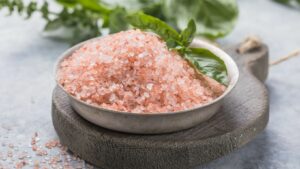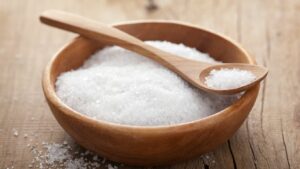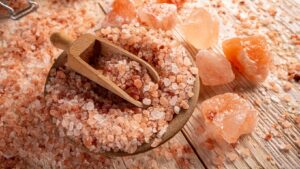Salt, it’s the humble seasoning that’s often taken for granted. Yet, it’s a culinary game-changer, transforming bland dishes into mouth-watering masterpieces. This article is set to explore the fascinating world of cooking salt, revealing its hidden depths and extraordinary culinary potential.
So, let’s embark on this flavorful journey together, exploring the role of salt in our kitchens and how it’s more than just a simple seasoning. It’s time to unlock the full potential of this culinary marvel and take your cooking to the next level.
Cooking Salt

Building on the diverse world of salts, this section delves deeper into the different types of cooking salt. First, the industry-standard table salt, which is refined and typically has added iodine. This salt’s fine grains dissolve quickly making it an excellent choice for baking.
Second, Kosher salt, named for its use in making meat kosher by removing surface blood, typically has larger, coarser grains and contains no added iodine. Chefs often prefer it for its ease of handling and a milder flavor.
Thirdly, the popular Himalayan Pink Salt stands out due to its captivating pink color from trace minerals. It serves both culinary and aesthetic purposes in food presentation.
On the fourth position, there’s Sea Salt, harvested from evaporated sea water. It carries trace minerals and elements which provide a more complex flavor profile.
Finally, we have Fleur de Sel or “flower of salt,” a hand-harvested sea salt known for its delicate flavor, premium quality, and higher price.
Benefits of Using Salt in Cooking

Salt isn’t just about taste, it contributes in numerous ways to a dish’s overall dimensions. For example, it enhances intrinsic flavors altering them to be more vivid and pronounced for a more enjoyable dining experience. Salt acts as a catalyst for a chemical reaction responsible for converting food starches into sugars, which in turn caramelizes, resulting in a delightful savory depth of flavor. It also has a role in food preservation, curbing the growth of microbes by drawing out moisture and creating an inhospitable environment for bacteria.
Consider salt’s function in baking. Salt strengthens gluten structures in bread dough, offering a firmer, more appealing texture. In caramels and chocolates, it balances sweetness, delivering a complex flavor profile that can’t be achieved by sugar alone.
How Salt Affects Health
After understanding the varied roles of cooking salt, it becomes equally vital to comprehend its impact on health. When consumed in moderation, salt ensures the optimal functioning of the human body, including the maintenance of physiological fluid balance and proper nerve conduction. However, excess consumption often leads to various health complications, chief among them being hypertension, a leading cause of cardiovascular diseases globally.

A study issued by the American Heart Association asserts that consuming more than 2,300 milligrams of sodium a day is detrimental to heart health. Moreover, high salt intake often intensifies kidney disease risk, causing unregulated fluid balance. Catharine R. Gale, a researcher at MRC Lifecourse Epidemiology Unit, University of Southampton, emphasizes the same in her study, linking excessive salt to cognitive decline. Therefore, one must balance the intake, leveraging its culinary benefits without compromising health.
Salt Usage Tips for Home Cooks
The versatility of cooking salt can’t be overstated. It’s an indispensable tool in the kitchen, enhancing flavors and textures in a myriad of dishes. From sea salt flakes to Himalayan pink, each type brings its unique touch to the culinary table. Beyond flavor, salt plays a critical role in food preservation and catalyzing chemical reactions. But it’s not just about taste and cooking chemistry. It’s vital to remember the health implications of salt. While it’s a necessary part of our diet, excessive intake can lead to health problems like hypertension and cognitive decline. So, it’s all about balance. Use salt to unlock the potential of your ingredients, but always with a mindful eye on moderation. That’s the secret to making the most of this culinary powerhouse.

